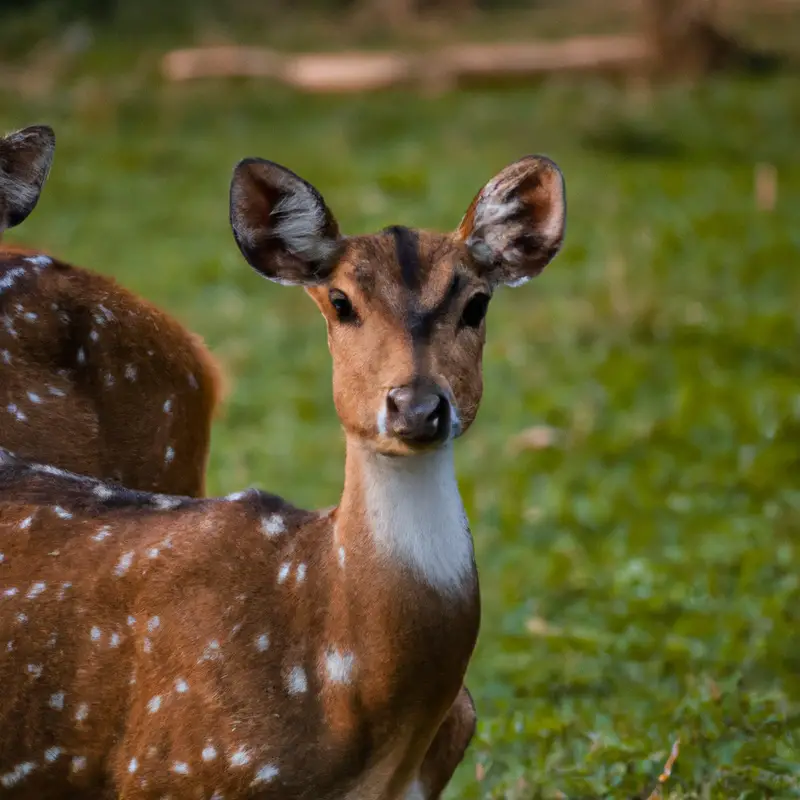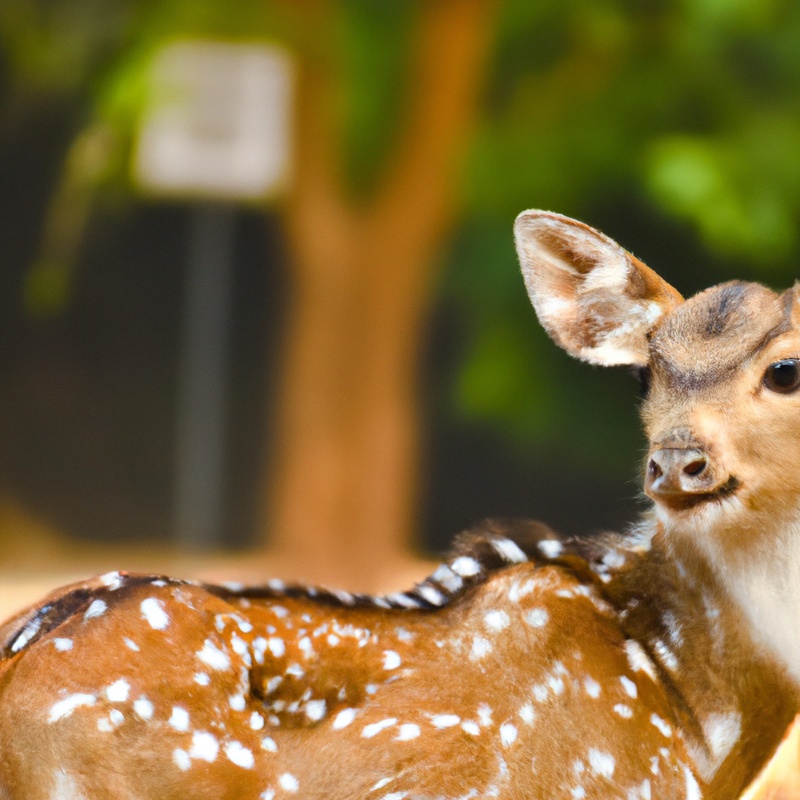Key Takeaways:
- White-tailed deer hunting is a popular activity in Delaware.
- Hunters generally have a high success rate in harvesting white-tailed deer.
- There are specific regulations and seasons for hunting white-tailed deer in Delaware.
- Hunting white-tailed deer can help manage the population and mitigate human-wildlife conflicts.
Are you ready for an unforgettable hunting adventure?
Delaware may not be the first state that comes to mind when thinking of deer hunting, but let me tell you, it’s a hidden gem for passionate hunters like us.
With its vast and diverse landscape, Delaware offers an incredible experience in pursuing the elusive white-tailed deer.
As an avid hunter myself, I’ve explored the hunting regulations, scouted the best public areas, and mastered effective strategies for success.
In this article, I will guide you through the ins and outs of hunting white-tailed deer in Delaware, from licenses and equipment to scouting locations and safety practices.
Get ready to embark on an unforgettable journey into the heart of deer hunting in the First State!
White-tailed Deer Hunting | |
Delaware Regulations | |
Season Dates | September 1 – January 31 |
Legal Hunting Methods | Firearms, archery, crossbows, and muzzleloader |
Bag Limit | 4 deer per hunting year (1 antlered, 3 antlerless) |
License Requirement | Delaware hunting license and deer permit |
Public Land Hunting | Yes, available in various wildlife areas and state forests |
Private Land Hunting | Allowed with landowner permission |
Prohibited Activities | Using artificial lights, hunting within 100 yards of any occupied structure without permission |
Special Regulations | Some areas may have special regulations, such as antler restrictions or additional permit requirements |
Hunting Regulations and Licenses in Delaware
Hunting Seasons for White-tailed Deer in Delaware
Hunting Seasons for White-tailed Deer in Delaware are regulated by the state.
The season typically runs from early September to the end of January, with specific dates announced each year.
Archery season usually starts first, followed by muzzleloader and shotgun seasons.
It’s important to check the Delaware Division of Fish & Wildlife website for the most up-to-date information on season dates, bag limits, and other regulations.
Remember to always hunt responsibly and follow all hunting laws and safety guidelines.
Happy hunting!
Licensing Requirements for Deer Hunting in Delaware
To hunt deer in Delaware, you’ll need a valid hunting license, a Delaware hunting stamp, and a deer tag. Make sure you complete a hunter education course if you were born on or after January 1, 1967.
Be aware of the hunting seasons and bag limits set by the Delaware Department of Natural Resources and Environmental Control (DNREC).
Follow all the rules and guidelines for a safe and legal hunting experience.

Bag Limits and Harvest Reporting in Delaware
Bag limits and harvest reporting are important aspects of hunting in Delaware.
The bag limits set by the state determine the number of white-tailed deer you are allowed to harvest during a hunting season.
It is crucial to abide by these limits to ensure the conservation and sustainability of the deer population.
Additionally, Delaware requires hunters to report their harvests, which helps wildlife authorities gather valuable data for managing the deer herd.
Following the bag limits and reporting your harvests accurately is essential for responsible hunting in Delaware.

Choosing the Right Equipment for Deer Hunting
Essential Firearms for Hunting White-tailed Deer
When it comes to hunting white-tailed deer, having the right firearm is essential.
Here are some options to consider:
- Bolt-Action Rifle: Known for their accuracy and reliability, bolt-action rifles are a popular choice for deer hunting. Look for calibers like .270, .30-06, or .308 for enough power to take down a deer effectively.
- Lever-Action Rifle: A classic choice, lever-action rifles provide quick follow-up shots and are well-suited for dense brush and close-range encounters with deer. Popular calibers include .30-30 Winchester and .45-70 Government.
- Semi-Automatic Rifle: Semi-automatic rifles offer rapid-fire capabilities and are great for hunters who prefer a lighter recoil. Calibers like .243, .308, or 6.5 Creedmoor are commonly used for deer hunting.
- Shotgun: Shotguns are perfect for hunting in thick cover or when hunting with dogs. Choose a shotgun with a smoothbore barrel and a gauge of 20 or 12. Slugs or buckshot cartridges are suitable choices for deer hunting.
- Muzzleloader: For a traditional hunting experience, consider using a muzzleloader. These firearms require reloading after each shot, but they offer a unique challenge and can be quite rewarding. Make sure to check the legal requirements for using muzzleloaders in your hunting area.
Remember to choose a firearm that you are comfortable with and practice proper firearm safety at all times.
Optics and Scopes for Deer Hunting in Delaware
When it comes to deer hunting in Delaware, having the right optics and scopes is essential.
Optics such as binoculars or spotting scopes can help you scan the area and spot deer from a distance.
A reliable scope on your rifle can greatly improve your accuracy and help you make clean and ethical shots.
Look for scopes with good light transmission, magnification options, and a reticle suitable for hunting.
Remember to check Delaware’s hunting regulations to ensure your scope is compliant.
Happy hunting!
Hunting Gear and Clothing Recommendations
When it comes to hunting gear and clothing, there are a few key items that you should consider.
Firstly, a reliable and accurate firearm or bow is essential for deer hunting.
Additionally, you’ll want to invest in camouflage clothing to help you blend into your surroundings.
A good pair of boots is also crucial to keep your feet comfortable and protected while covering long distances in the wilderness.
Finally, don’t forget essentials like binoculars, a backpack, and a knife for field dressing.
Overall, by choosing the right gear and clothing, you’ll be well-prepared for a successful deer hunting experience.
Scouting and Selecting Hunting Locations
Understanding Deer Behavior and Habitat in Delaware
Understanding Deer Behavior and Habitat in Delaware is essential for a successful hunt.
In Delaware, white-tailed deer primarily inhabit forests and woodland areas.
They are most active during dawn and dusk, so plan your hunting trips accordingly.
Pay attention to deer trails, bedding areas, and feeding grounds, as these are the key areas to scout.
Additionally, knowing the deer’s behavior patterns, such as their tendency to seek cover when startled, can give you an advantage.
Stay quiet, use scent control methods, and be patient.
Happy hunting!
Best Public Hunting Areas in Delaware
When it comes to hunting white-tailed deer in Delaware, there are several public hunting areas worth considering. Here are some of the best options:
- Blackbird State Forest: With over 5,400 acres of wooded areas, this forest offers a diverse habitat for deer. It also has designated hunting zones and ample parking.
- Redden State Forest: This 12,404-acre forest provides a mix of hardwood and pine trees, creating excellent cover for deer. It is known for its large deer population and offers multiple hunting options.
- Augustine Wildlife Area: Situated along the Delaware Bay, this 3,200-acre area offers both tidal marshes and uplands – a perfect combination for hunting white-tailed deer.
- C&D Canal Conservation Area: Located along the Chesapeake & Delaware Canal, this area features woodland and open fields, attracting a healthy deer population.
- Little Creek Wildlife Area: This wildlife area covers over 4,700 acres and provides a variety of hunting opportunities, including archery, shotgun, and muzzleloader deer hunting.
Remember, always check the specific hunting regulations and seasons for each public hunting area before planning your hunt. Happy hunting in Delaware!

Tips for Successful Scouting and Stand Placement
Successful scouting and stand placement are essential for a fruitful hunting experience.
Here are some tips to help you in this process:
- Study the Maps: Utilize topographic and hunting maps to identify potential hunting areas, such as ridges, valleys, or feeding areas.
- Look for Signs: Pay attention to deer signs like rubs, scrapes, tracks, and droppings. This will indicate their presence in the area.
- Use Trail Cameras: Set up trail cameras near deer trails to gather valuable information about deer movement and behavior.
- Scout at the Right Time: Scout during the pre-season to observe deer patterns and identify their preferred travel routes and feeding areas.
- Blend In: When placing your hunting stand, make sure it is well concealed and blends in with the surroundings to avoid spooking deer.
- Consider Wind Direction: Place your stand downwind from where you expect the deer to come from, as deer rely heavily on their sense of smell.
- Stay Mobile: If you’re not finding success in your current location, be willing to move and scout for new areas to increase your chances of a successful hunt.
Remember, scouting and stand placement go hand in hand and require patience and persistence.
Good luck on your hunting adventure!
Strategies for Hunting White-tailed Deer in Delaware
Deer Calling Techniques in Delaware
Deer Calling Techniques in Delaware are effective ways to attract white-tailed deer during hunting.
One technique is the grunt call, mimicking the sounds of a buck to lure them close.
Another technique is the doe bleat call, imitating a doe’s vocalization to attract bucks in search of a mate.
Additionally, utilizing rattling horns can simulate the sound of two bucks fighting, catching the attention of nearby deer.
Experiment with different calling techniques and patterns to find what works best in your hunting area.
Effective Deer Hunting Methods and Approaches
So you want to know about effective deer hunting methods and approaches?
Well, I’ve got some tips for you.
One approach is to focus on scouting and understanding the deer’s behavior.
Look for signs of their presence, such as tracks, rubs, and scrapes.
Another method is to use the wind to your advantage.
Position yourself downwind of where you expect the deer to be, so they won’t catch your scent.
Additionally, using natural cover to hide yourself can increase your chances of a successful hunt.
Happy hunting!
Tips for Tracking and Recovering Deer
When tracking and recovering deer, there are a few helpful tips that can increase your chances of success:
- Take note of blood sign: Look for blood on the ground or vegetation. This can indicate a hit and aid in tracking the deer’s path.
- Follow the trail: Stay on the deer’s track, looking for disturbances, broken branches, or bent grass. These signs can guide you towards the wounded animal.
- Pay attention to hair and tracks: Deer often leave behind traces of hair or tracks. These can provide valuable clues about the direction the animal is headed.
- Use binoculars: Binoculars can help you scan the area for any signs of the deer, such as movement or a bedded down animal.
- Practice patience: Tracking and recovering a wounded deer can be a time-consuming process. Stay calm, take your time, and be persistent in following the trail.
By keeping these tips in mind, you can improve your tracking and recovery skills when hunting deer in Delaware.
Field Dressing and Processing Deer
Field Dressing Techniques for White-tailed Deer
Field dressing a white-tailed deer is an important skill for hunters. Here are some techniques to keep in mind:
- Locate the diaphragm and make an incision from the breastbone down to the pelvis.
- Remove the entrails carefully, taking care not to puncture the stomach or intestines.
- Split the pelvic bone to aid in removal of the bladder and rectum.
- Rinse the cavity with cold water to remove any excess blood or debris.
- Hang the deer to allow it to cool before further processing the meat.
Remember, proper field dressing is crucial for preserving the quality of the meat.
Proper Transportation of Harvested Deer in Delaware
Proper transportation of harvested deer in Delaware is essential to ensure the meat remains safe for consumption and to comply with state regulations. Here are some important guidelines to follow:
- Once you’ve harvested a deer, field dress it as soon as possible to remove the internal organs.
- Transport the deer in a clean and secure manner, ensuring that it is protected from contaminants and kept at a safe temperature.
- If you’re transporting the deer in your vehicle, cover it with a tarp or using a secure transport container to prevent any contact with the interior of the vehicle.
- When transporting multiple deer, keep each carcass separate and clearly labeled to avoid confusion.
- It is illegal to transport diseased or infected deer carcasses, so consult the Delaware Division of Fish and Wildlife’s regulations to ensure compliance.
Processing and Preserving Deer Meat
Processing and preserving deer meat is an important step in making the most out of your hunting experience.
After field dressing the deer, start by removing the skin and separating the meat into different cuts.
Ensure that the meat is properly cooled before further processing.
Consider grinding the meat for burgers or sausages, or leave it in larger cuts for roasts and steaks.
Vacuum sealing and freezing the meat helps to keep it fresh for longer.
Properly processed and preserved deer meat can provide delicious meals throughout the year.
Safety Practices for Deer Hunters
Basic Firearm Safety Rules in the Field
When you’re out in the field, it’s important to prioritize safety when handling firearms.
Here are some basic rules to keep in mind:
- Treat every firearm as if it’s loaded, even if you believe it’s not. This means keeping the muzzle pointed in a safe direction at all times.
- Always keep your finger off the trigger until you’re ready to shoot. This helps prevent accidental discharges.
- Be aware of your surroundings and identify your target and beyond before shooting. This helps ensure you don’t accidentally harm others or property.
- Maintain control of your firearm at all times. Never leave it unattended or hand it to someone without first ensuring it’s unloaded and safe.
- Wear appropriate protective gear, such as ear and eye protection, to safeguard against potential accidents.
- Stick to your shooting zone and be aware of other hunters in the vicinity to avoid any potential conflicts.
Utilizing Safety Harnesses and Tree Stand Safety Measures
Harnesses are essential for tree stand safety.
Always wear a safety harness when climbing up or down a tree stand, as well as when sitting in it.
Make sure the harness is properly fitted and secured to the tree and your body.
Additionally, regularly inspect your tree stand for any signs of wear or damage.
Check the straps, bolts, and platform for stability.
Follow these safety measures to prevent falls and ensure a safe hunting experience.
Importance of Hunting Ethically and Responsibly
Hunting ethically and responsibly is essential for the overall well-being of wildlife populations and ecosystems. By prioritizing these values, hunters can ensure sustainable hunting practices and contribute to conservation efforts.
Ethical hunting involves adhering to laws and regulations, practicing fair chase, and minimizing suffering to the animal.
Responsible hunting includes proper training, using appropriate equipment, and respecting private property rights. It is important to recognize that hunting can have a positive impact when done in a mindful and ethical manner.
Frequently Asked Questions (FAQs) about Deer Hunting in Delaware
Can non-residents hunt white-tailed deer in Delaware?
Yes, non-residents can hunt white-tailed deer in Delaware. The state offers hunting licenses to both residents and non-residents.
However, non-residents should be aware that they may need to purchase additional permits and follow specific regulations.
It’s important to check with the Delaware Department of Natural Resources and Environmental Control (DNREC) for the most up-to-date information on hunting licenses and regulations for non-residents. Happy hunting!
Are there any restrictions on using bait while deer hunting in Delaware?
Yes, there are restrictions on using bait while deer hunting in Delaware. The use of bait, including salt, grain, or any other food substance, is prohibited in areas where deer hunting is permitted.
However, bait can be used on private property outside of deer hunting seasons to attract deer for non-hunting purposes.
It’s important to always check the specific regulations and guidelines set by the Delaware Department of Natural Resources and Environmental Control (DNREC) to ensure compliance and responsible hunting practices.
What are the penalties for violating hunting regulations in Delaware?
Violating hunting regulations in Delaware can result in various penalties.
These penalties include fines, loss of hunting privileges, and potential imprisonment.
The severity of the penalties depends on the nature of the violation.
Common violations such as hunting without a license or exceeding bag limits can result in fines ranging from $50 to $1,000, along with possible suspension of hunting privileges.
More serious offenses, such as illegal harvest of protected species or hunting under the influence, can lead to higher fines, longer license suspensions, and even imprisonment.
It is essential to familiarize yourself with Delaware’s hunting regulations to avoid these penalties and ensure a safe and legal hunting experience.
Final Verdict
Hunting white-tailed deer in Delaware offers a thrilling and rewarding experience for both residents and non-residents.
By following the state’s hunting regulations and acquiring the necessary licenses, hunters can enjoy a successful and responsible hunting season.
Choosing the right equipment, scouting and selecting hunting locations, implementing effective hunting strategies, and practicing safety measures are all vital for a successful hunting trip.
With its diverse wildlife and abundant public hunting areas, Delaware provides ample opportunities for hunters to connect with nature and enjoy the thrill of the chase.
Happy hunting! Overall, this blog provides a comprehensive guide to hunting white-tailed deer in Delaware, covering everything from licensing requirements and bag limits to equipment recommendations and safety practices.
The information presented is based on authoritative sources and my own expertise as a hunting enthusiast.
By following the guidelines and implementing the strategies discussed, hunters can have a safe, successful, and enjoyable hunting experience in the beautiful state of Delaware.








